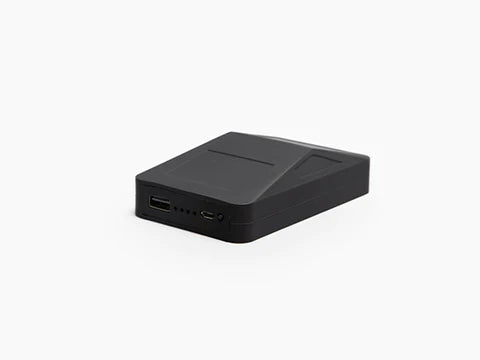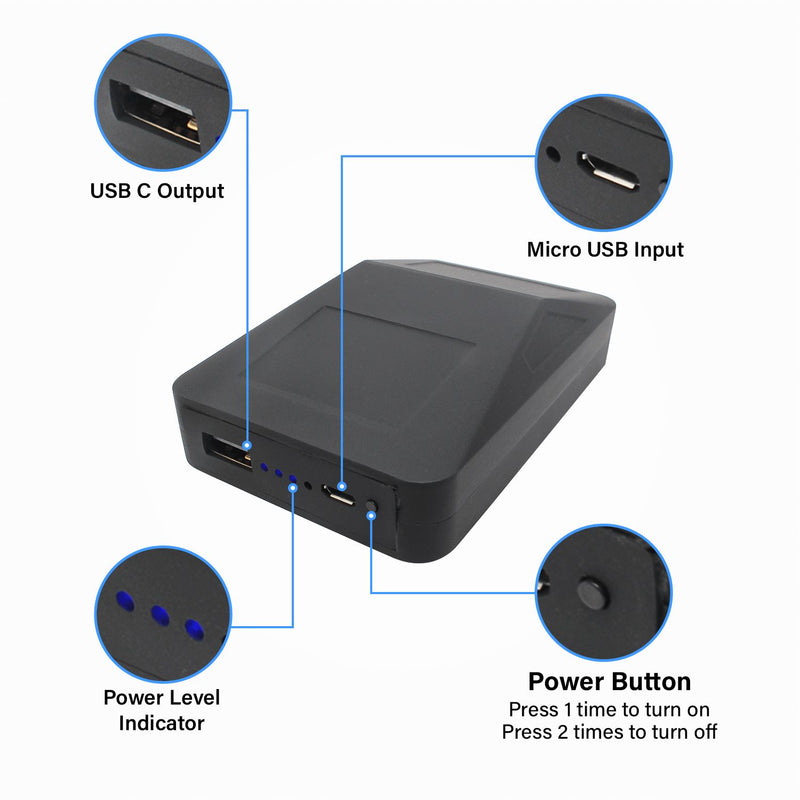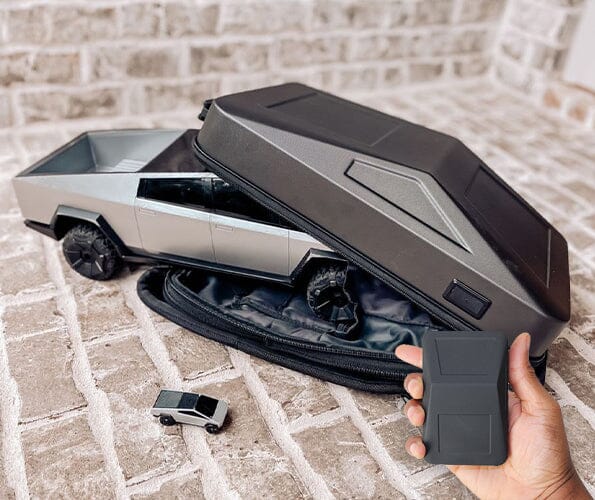Because of how common battery-powered gadgets such as our smartphones have become, power banks have grown insanely popular. Some batteries are simply not powerful enough to last you all day without needing to be recharged, making power banks an essential part of your backpack accessories! The real question is, how are these portable chargers even made?
A power bank or portable charger operates by drawing electricity from an external source, such as a wall socket. This power is then stored as electrical energy in a rechargeable battery. The stored energy is then used to charge or power up the internal battery of other electronic devices, such as a smartphone or tablet, therefore depleting its own battery.
Sounds straightforward, right? Still, you may be surprised to discover that a lot of complex electrical components are involved in achieving this charging, storing, and discharging cycle.
Power Bank Main Components
Now that you understand how a power bank works, you should be aware that the rechargeable battery pack inside it is the most important component. And, because it must charge itself as well as other electronic devices, additional electrical circuitry is required to make everything work.
A rechargeable battery pack, input and output ports, a charging circuit, a discharging circuit, a battery protection and monitoring circuit, a controller, a switch, and indicators are the essential components of a power bank. For added security, sophisticated power banks may contain components such as temperature and current sensors.
Let's go through these components one by one to see how a power bank works.
Power Bank Rechargeable Battery
A power bank is just a rechargeable battery with charging and discharging circuits. As a result, the battery pack within is the core component.
All rechargeable batteries used in power banks nowadays are lithium-ion. It might be Lithium-Ion or Lithium-Polymer.
In case you're wondering, the batteries used in mobile phones, tablets, and most other electronic devices are also lithium-based.
But which is superior? Lithium-Ion vs. Lithium-Polymer: It turns out that both have advantages.
The Benefits of Using Lithium-Ion Batteries
- When compared to Lithium-Polymer, it has greater charge-discharge cycles. This implies the battery will last longer before losing efficiency.
- When compared to Lithium-Polymer, the production method is less costly. This contributes to the power bank's low price-performance ratio.
The Benefits of Using Lithium-Polymer Batteries
- As they have a greater energy density than Lithium-Ion This allows a significant quantity of energy to be packed into a relatively tiny form factor.
- When compared to Lithium-Ion, there is a lower risk of explosion. This contributes to the power bank's overall safety. This is why we use a Lithium-Polymer based system in our Cyber Power Bank too!
The higher the quality of the employed battery, the more efficient the power bank. Even after three months, a decent quality power bank from a reputable manufacturer would retain over 80% of its full charge.
A low-quality power bank, on the other hand, will drain itself within a month. The capacity to hold charge is a significant criterion for determining the quality of a power bank.
One or more rechargeable batteries will be linked in serial or parallel in most power banks. The configuration will be determined by the power bank's required energy output.
Most high-quality lithium batteries can endure over 1000 charge/discharge cycles while still retaining 80% of their initial capacity. This is the main reason why they are now found in all portable power banks.
The Circuit for Battery Protection and Monitoring
Lithium-ion batteries are difficult to charge. When the voltage exceeds a specific threshold, the battery temperature begins to rise. This might cause the battery to catch fire or explode, causing significant harm to the user.
As a result, the power bank's battery pack is linked to a Battery Protection Circuit.
The circuit's job is to continuously evaluate the battery's input and output voltage and current. For increased security, the battery protection circuit might also include a temperature sensor.
The Battery Protection Circuit's Key Functions in a Power Bank
In a nutshell, this is what a protection circuit does:
- When the battery voltage level exceeds a specified threshold, disable charging (overcharge protection)
- Disable discharging when the battery voltage falls below a specific level (over-discharge protection)
- Disable discharge when a short circuit is detected (short circuit protection)
- Disable charging and discharging if the battery or circuit temperature exceeds or falls below their normal working range (temperature protection)
And that’s not all, this circuit can also include extra capabilities. Our Cyber Power Bank uses this circuit to monitor the battery's remaining charge. Here, the circuit is linked to LED indicators that show the remaining charge on the high-quality PVC shell of the power bank as dots.
A Power Bank's Charging Circuit
A power bank's charging circuit is responsible for charging the rechargeable battery pack. But why must a separate circuit be used to charge the battery?
This is because of the fact that lithium-ion batteries cannot be charged with a standard power supply. If you do not charge the battery according to the instructions, its operation may be affected. In the worst-case scenario, the battery will catch fire and perhaps explode. So, how do you charge a rechargeable Lithium battery?
A rudimentary algorithm exists for charging a lithium-ion battery. The battery must be charged at a consistent current throughout the first phase until the voltage reaches a maximum value.
The voltage is then maintained constant in the next phase, while the charging current is progressively reduced to around 10% of the original charge rate, known as the termination current. The maximum voltage and termination current are slightly different based on the model and manufacturer.
The first phase swiftly charges over 80% of the battery. The second phase, which charges the remaining 20%, is quite sluggish. This is the only technique to charge any Lithium-based battery securely. This charging process is carried out by the charging circuit within the power bank.
Because charging occurs via a USB input port, the input voltage is typically 5V. The charging circuit is made up of a buck converter module, which converts the input voltage to either constant current or constant voltage, depending on the charging algorithm of the lithium battery.
A Power Bank's Discharging Circuit
The discharge circuit, as the name implies, is in charge of discharging the rechargeable battery inside the power bank, resulting in a power output that is used to charge other devices.
A lithium battery has a voltage level of 3.7V. Electronic devices, like your iPhone or iPad, require a 5V power supply. The output port of a power bank, like the input port, is normally USB and has a standard value of 5V. So, how do you suppose the power bank will do this?
The voltage level must be stepped up to provide a 5V output. A boost converter module performs this function in the discharge circuit. The discharge circuit can also restrict the current based on consumption, giving a greater output voltage.
A Power Bank's Controller and Switch
A power bank's switch is connected to a controller, which actually executes some of the power bank's user-controlled operations. Among them are:
- Start charging an external device by flipping on the boost converter.
- When the boost converter senses that no current is being taken by an external device, it will automatically turn off.
- Display the battery level when charging and draining.
- Charge / Discharge Ports.
For input and output, most power banks include USB connections. In most cases, Micro-USB ports are used for input while Type-A ports are used for output. The Cyber Power Bank includes a USB Type-C input as well. This can be used to charge your phone. The power bank can even charge your laptop if it uses Type-C!
Wrapping things up
A power bank works like a rechargeable battery that can charge itself and then can be used to charge other devices. Even the most basic power bank has some complex circuitry inside it. With advancements in technology, power banks will simply become more and more efficient and portable.












